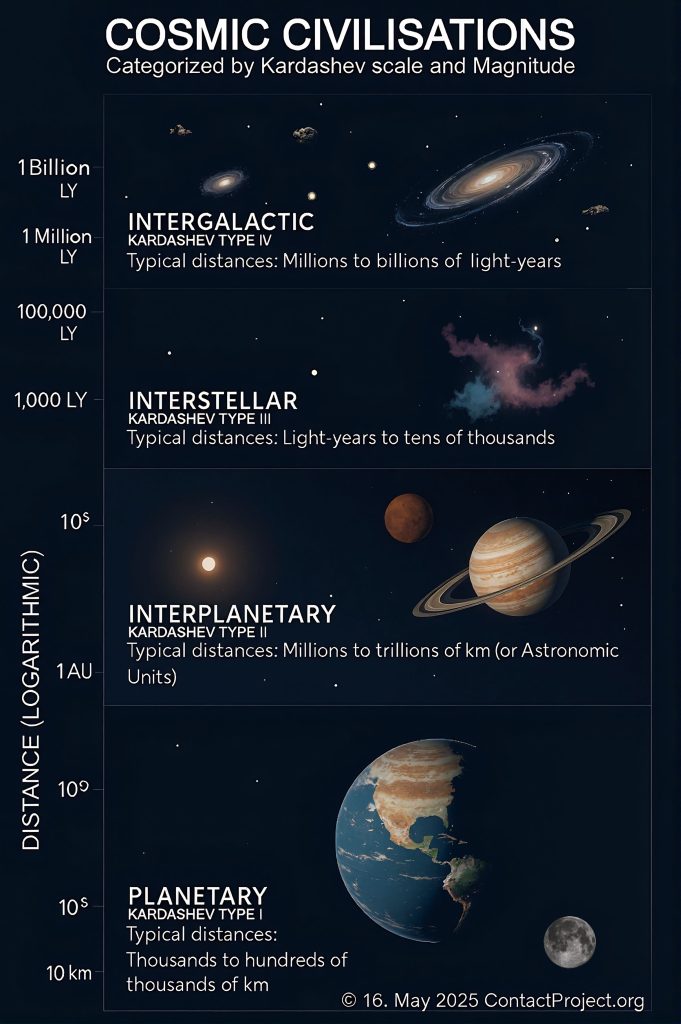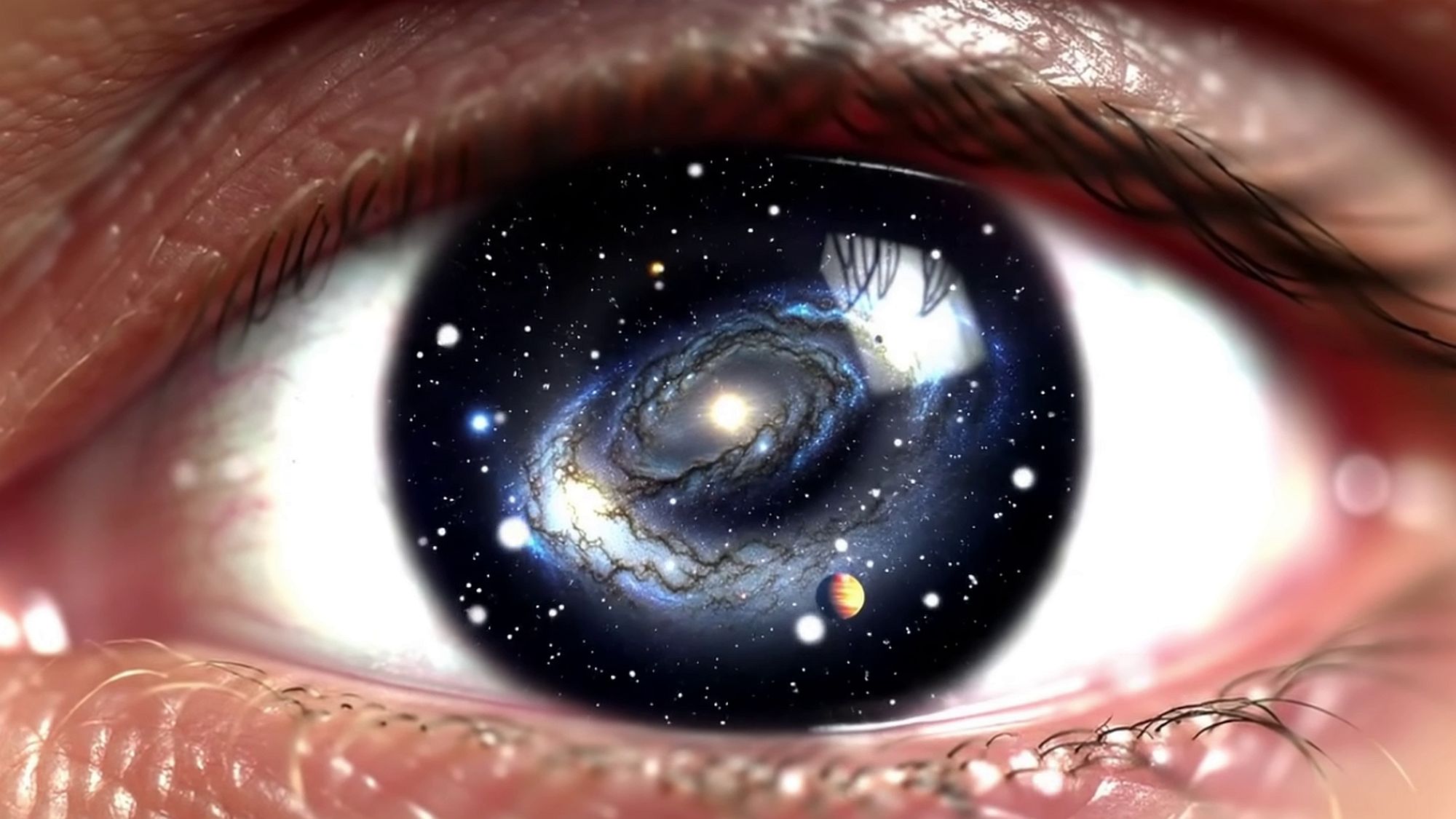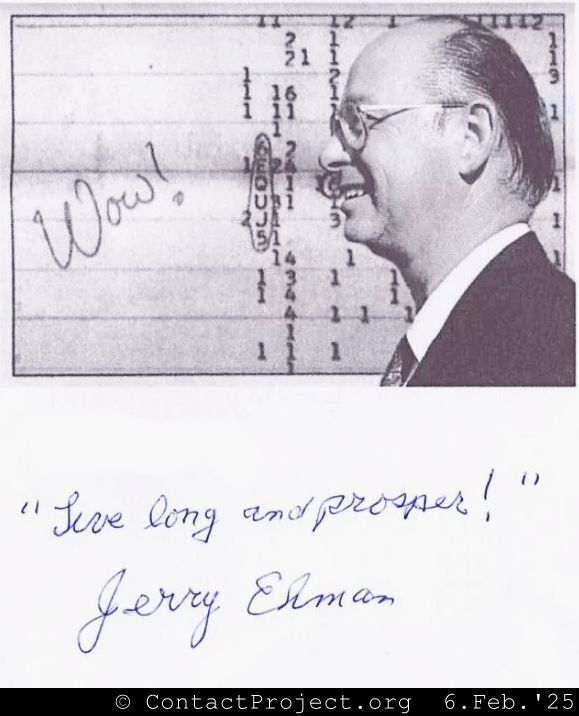Physicist Michio Kaku has publicly discussed the theoretical capabilities of extraterrestrial civilizations, particularly in the context of Unidentified Anomalous Phenomena (UAPs or UFOs). He argues that if such objects are indeed spacecraft from non-human intelligences capable of interstellar or intergalactic travel, they would likely originate from a highly advanced civilization, potentially a Type III on the Kardashev scale, possessing the ability to manipulate space and time.
The Challenge of Cosmic Distances
Kaku emphasizes the immense distances separating stars and galaxies, which render travel by conventional means (like current human rocket technology) impractical for interstellar voyages, requiring tens of thousands of years to reach even the nearest stars. For intergalactic travel, the distances are millions of times greater.
Could UAPs be the scout spacecraft of a galactic civilization?

To answer that, we must journey into the realm of theoretical physics and cosmic evolution.
Imagine beings who have mastered energies on a scale that dwarfs our planetary concerns. That is the domain of a Kardashev Type III civilization.
The Kardashev Scale (after Soviet astronomer Nikolai Kardashev) classifies civilizations by their energy consumption:
- A Type 0 civilization, like our own, derives its energy from dead plants and animals (oil, coal) and is still subject to the whims of nature. We are, in cosmic terms, infants.
- Type I civilization has mastered planetary energy. They can control the weather, harness the power of their entire planet, and utilize all the sunlight that strikes its surface. Think of Buck Rogers.
- Type II civilization has graduated to stellar power. They can consume the entire energy output of their parent star. Dyson spheres, theoretical megastructures that could encompass a star, are a hallmark of such a civilization. Star Trek’s Federation is beginning to approach this level.
- Then, there’s Type III: a galactic civilization. They command the power of an entire galaxy, perhaps harnessing the energy of billions of stars, maybe even manipulating black holes. Think of “Star Wars” or the ancient builders in many science fiction sagas.

Intergalactic travel isn’t a matter of building a bigger rocket. To traverse millions of light-years in any reasonable timeframe, you must manipulate space-time itself—harnessing Planck-scale energies to open wormholes or drive a warp bubble.
Who could wield such power?
Type I powers a planet.
Type II powers a solar system.
Only a Type III civilization can treat a galaxy as its playground—warping, folding, or tunneling through space-time at will.
So, if these UFOs are indeed piloted by beings from another world, and if they demonstrate capabilities like instantaneous acceleration, right-angle turns at hypersonic speeds, and, crucially, the ability to traverse interstellar or even intergalactic distances, then we are not dealing with a civilization just a few centuries ahead of us. The sheer energy requirements and the physics involved point to something far grander.
Such beings would likely be the product of a Type III civilization. They would have long ago mastered the fundamental forces, unlocked secrets of space-time that we are only just beginning to ponder, and command energies that could light up (or extinguish) stars.
While we must always approach these UAP reports with scientific rigor and skepticism, it’s an intriguing thought experiment. If they are real, and not of this Earth, then the beings behind them are not just visitors from another star; they are potentially emissaries from a civilization so advanced, they are practically gods in their ability to manipulate the cosmos.
It opens up the tantalizing, and perhaps humbling, possibility that we are but a tiny part of a much larger, far more advanced, cosmic neighborhood. The universe, it seems, is far more fascinating than we ever imagined.
FACT CHECK
The above text aligns with Dr. Michio Kaku’s public statements on:
- The Kardashev Scale and Civilizational Classification
- Type III civilizations’ capacity for intergalactic travel
- The physics of space-time manipulation (Planck energy, wormholes, warp drives)
- Recent UAP commentary (extreme maneuvers in Navy pilot footage, implied G-forces, trans-medium capabilities)
1. On the Kardashev Scale and Classification of Civilizations
Dr. Kaku frequently uses the Kardashev Scale as a framework to discuss the potential advancement of civilizations based on their energy consumption. He describes:
• Type 0 (like ours, reliant on fossil fuels)
• Type I (planetary; controlling weather and planetary energy)
• Type II (stellar; harnessing the entire output of their star, e.g. via a Dyson sphere)
• Type III (galactic; commanding the energy of an entire galaxy)
2. On Type III Civilizations and Intergalactic Travel
The article posits that intergalactic travel requires mastering energies on a galactic scale—a feat of a Type III civilization. Dr. Kaku agrees, suggesting such a civilization would have colonized its galaxy and harnessed the energy of billions of stars. He explicitly links Type III civilizations with space-time manipulation technologies (wormholes, warp drives).
3. On Advanced Technology and Manipulating Space-Time
The article notes that traversing intergalactic distances necessitates manipulating the fabric of space and time, including harnessing Planck energy. Dr. Kaku explains that while Special Relativity forbids FTL locally, General Relativity allows global warping of space-time. He emphasizes that only the colossal energies of a Type III civilization could achieve such feats.
4. On UFOs/UAPs and Highly Advanced Civilizations
The article speculates that if UAPs are extraterrestrial and exhibit capabilities beyond our physics, they might originate from Type III civilizations. Dr. Kaku has spoken increasingly about UAPs, noting new Navy pilot footage and other evidence. He points out that UAP characteristics (Mach 5–20 speeds, rapid acceleration, hundreds of Gs, transmedium travel) imply technologies far beyond ours. He cautions that these beings could be thousands or millions of years more advanced, placing them in the realm of Type III.
References:
- Kardashev Scale https://en.wikipedia.org/wiki/Kardashev_scale
- The Truth About UFOs with Michio Kaku
https://www.newsweek.com/truth-about-ufos-michio-kaku-newsweek-radio-podcast-interview-1781550 - The Physics of Extraterrestrial Civilizations
https://mkaku.org/home/articles/the-physics-of-extraterrestrial-civilizations/ - The four types of planetary civilizations, explained by Michio Kaku
https://youtu.be/qSnfMH8OX1g?si=ANYfhHYSSLBFb7OV - The Kardashev Scale – Can We Advance Beyond a Type III Civilization? https://futurism.com/the-kardashev-scale-type-i-ii-iii-iv-v-civilization
- Scientists Must ‘Keep An Open Mind’ About UFOs, Says Michio Kaku https://www.iflscience.com/scientists-must-keep-an-open-mind-about-ufos-says-michio-kaku-60864
- Reddit AMA: “I am Michio Kaku, physicist, futurist and author of THE FUTURE OF HUMANITY” https://www.reddit.com/r/IAmA/comments/bghqn9/i_am_michio_kaku_physicist_futurist_and_author_of/
- The Physics of Interstellar Travel https://mkaku.org/home/articles/the-physics-of-interstellar-travel/





